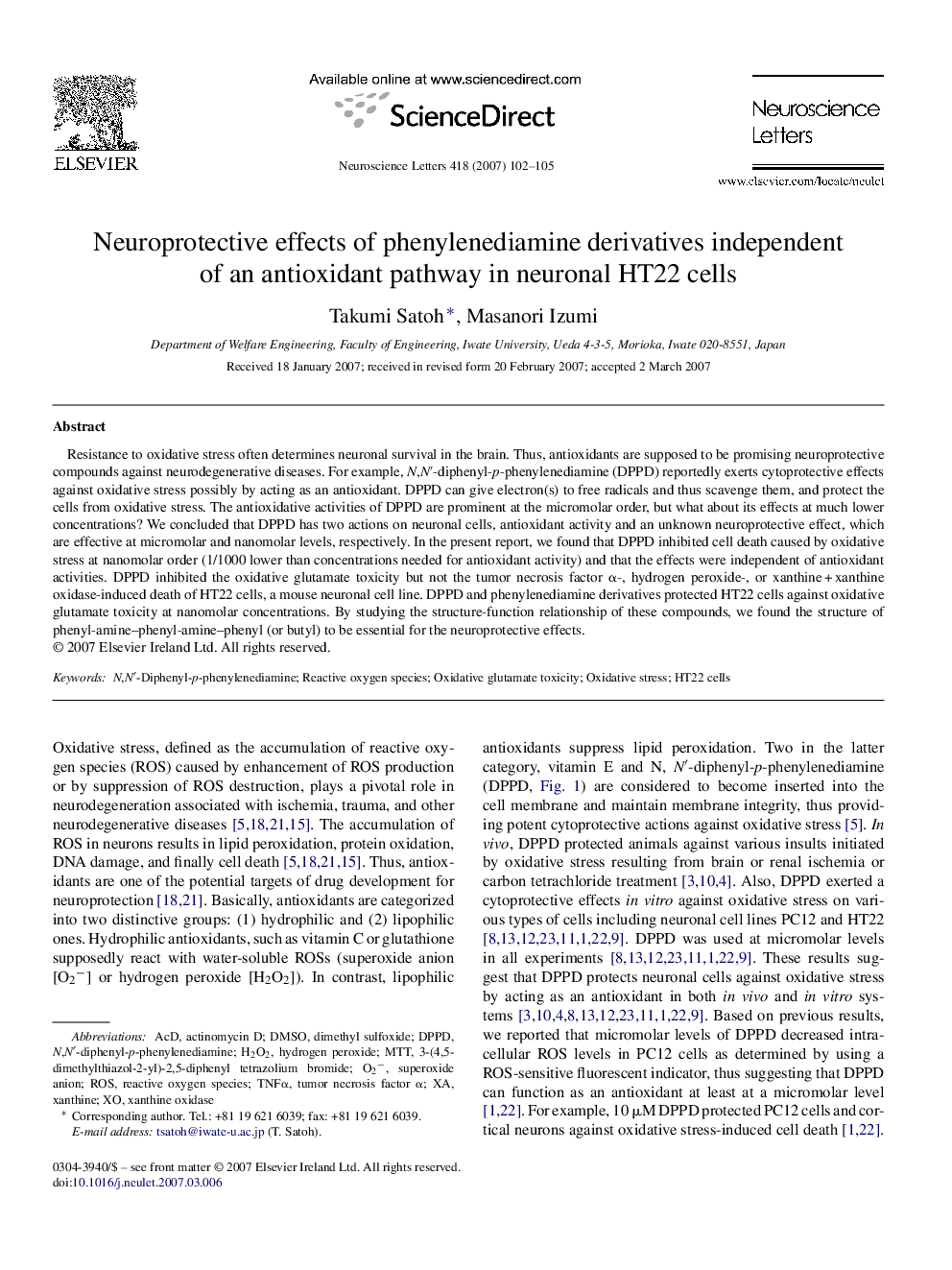| Article ID | Journal | Published Year | Pages | File Type |
|---|---|---|---|---|
| 4349762 | Neuroscience Letters | 2007 | 4 Pages |
Resistance to oxidative stress often determines neuronal survival in the brain. Thus, antioxidants are supposed to be promising neuroprotective compounds against neurodegenerative diseases. For example, N,N′-diphenyl-p-phenylenediamine (DPPD) reportedly exerts cytoprotective effects against oxidative stress possibly by acting as an antioxidant. DPPD can give electron(s) to free radicals and thus scavenge them, and protect the cells from oxidative stress. The antioxidative activities of DPPD are prominent at the micromolar order, but what about its effects at much lower concentrations? We concluded that DPPD has two actions on neuronal cells, antioxidant activity and an unknown neuroprotective effect, which are effective at micromolar and nanomolar levels, respectively. In the present report, we found that DPPD inhibited cell death caused by oxidative stress at nanomolar order (1/1000 lower than concentrations needed for antioxidant activity) and that the effects were independent of antioxidant activities. DPPD inhibited the oxidative glutamate toxicity but not the tumor necrosis factor α-, hydrogen peroxide-, or xanthine + xanthine oxidase-induced death of HT22 cells, a mouse neuronal cell line. DPPD and phenylenediamine derivatives protected HT22 cells against oxidative glutamate toxicity at nanomolar concentrations. By studying the structure-function relationship of these compounds, we found the structure of phenyl-amine–phenyl-amine–phenyl (or butyl) to be essential for the neuroprotective effects.
